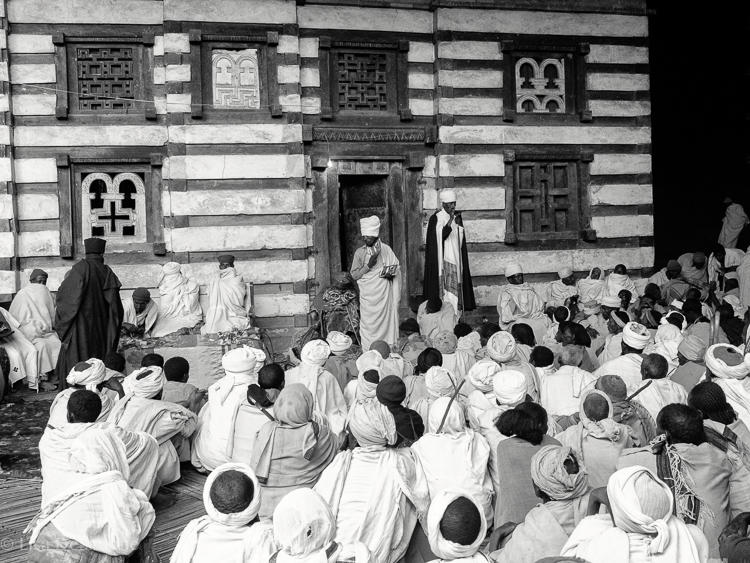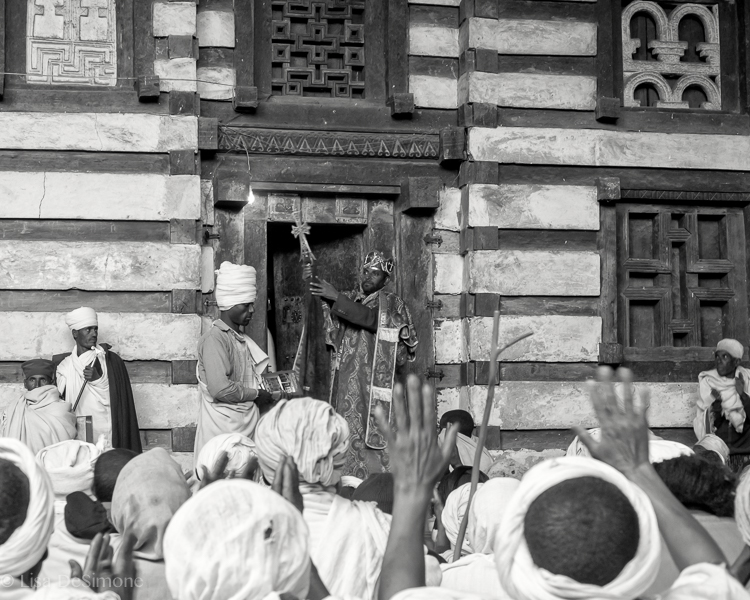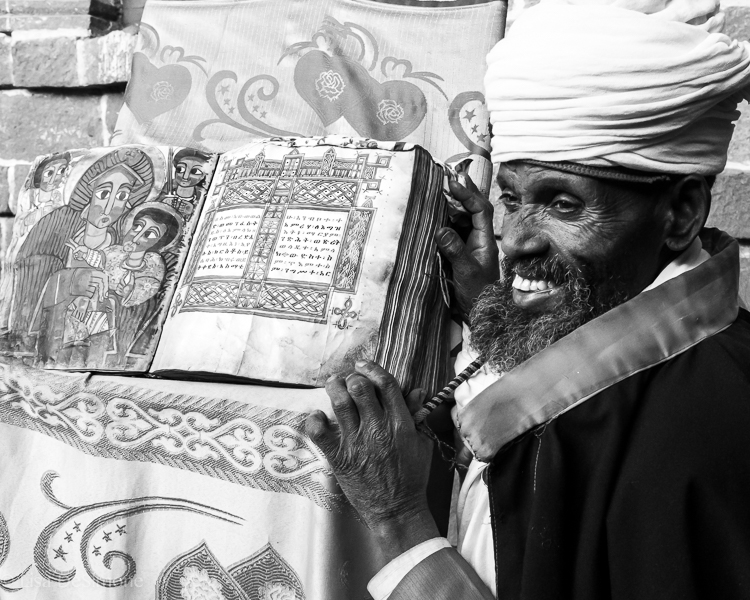LALIBELA: Faith and Devotion in the Mountains of Ethiopia
/I am fascinated with the idea of faith. Specifically, I am drawn to places where I can witness and capture the power of faith. Devotion, spirituality, worship - whatever you may call it - I am intrigued by people with high levels of reverence and enthusiasm for something beyond the physical. Religious observances are particularly interesting to me, so it only made sense that I head to Lalibela, Ethiopia to photograph the celebration of Orthodox Christian Christmas.
“It is wonderful, the power of a faith like that, that can make multitudes upon multitudes of the old and weak and the young and frail enter without hesitation or complaint upon such incredible journeys and endure the resultant miseries without repining.”
These words by Mark Twain sum up, in a way that I never could, everything I saw, thought and felt when visiting Lalibela. It was my second time there and, as with my first visit three years ago, the level of devotion was mind-blowing. You could feel the spirituality in the air.
Pilgrims listening to a sermon in the holy town of Lalibela
Lalibela is a small, rural town in a mountainous region in the heart of Ethiopia. During the 12th century, King Lalibela set out to construct a ‘New Jerusalem’ (after Muslim conquests halted Christian pilgrimages to the holy Land), and the result was a series of amazing churches carved down into the ground from "living rock.” Lalibela’s 11 churches have been designated a UNESCO World Heritage site, and as such many have (luckily) been fortified or protected.
Biete Giyorgis (Church of Saint George), thought to be the most finely executed and best preserved of all the churches - and also the most photographed
Outside of town lie the monasteries of Ashetan Maryam and Yimrehane Kristos Church, built within caves and equally as impressive as the rock-hewn churches. The walls of Yimrehane Kristos Church are constructed with alternating layers of recessed timber beams and projecting plastered stone, and the windows are covered by carved cruciform lattices. We happened to stumble upon a priest delivering a sermon there, which was a truly fortunate occurrence. We also walked around the areas outside of the main churches and came upon pilgrims enjoying rare moments of solitude and silence.
The inside and outside of the Lalibela rock-hewn churches were built into the ground on stretches of volcanic tuff rock. Some of the churches are free standing, while others are attached to the “mother rock” by one of the sides, and in one instance by the roof. Workers would start at the top and carve down creating the roof and walls of the church, then they would hollow it out to create the interior structure. (in this first image you can somewhat get a feel for the size of these churches)
The large blocks of stone were chiseled out, forming doors, windows, columns, floors, roofs, passageways between the structures, drainage ditches, trenches and some with openings to hermit caves and catacombs. Many of the churches have frescoes and murals that remain to this day.
Pilgrims entering one of the many passageways that connect the churches of Lalibela.
All the churches here are active churches even today, and they set the stage for one of the most moving celebrations one could ever witness. Lalibela is a high place of Ethiopian Christianity; a sacred town of pilgrimage and devotion. On a normal day, Lalibela has ~20,000 residents, but pilgrims flock here in vast numbers each January for Christmas. Most people walk for many days — in bare feet with few belongings — to reach this sacred town. It is a lifelong goal and privilege to be able to participate in the holy celebrations.
My friend and I arrived a few days before Christmas Day (which in 2017 fell on January 6th), as we wanted to experience Lalibela and visit the churches before they became too crowded. As we moved between the churches and learned of their history, we couldn't help but be mystified by the fact that these churches were cut out of rock over 900 years ago. You could tell that many of the pilgrims themselves were in awe as well.
As the days moved on, more and more people arrived. Having been here before, I knew what to expect, but this year I arrived with a more open mind and deeper appreciation for what I was about to witness.
While they are here most of the devotees sleep in a large field, which serves as a makeshift camp. As the number of people grows, the camps become crowded; the tunnels and passageways connecting the churches become crammed with pilgrims bumping into and shoving one another in their push to get from one church to another. They sing, they chant, they pray. By January 5th, the town was bursting at the seams.
The pilgrim camp
Despite wearing a white head scarf, it was impossible for me to blend in with the locals. That wasn’t an issue, however, and in fact proved to be quite a bonus. People knew we were visiting and everyone we met was so very kind and friendly, with many asking for their photos to be taken.
It's astounding to consider the level of faith these people must have to (gladly) endure so many challenges just to arrive here!!! One of the most beautiful sounds was the “la la la” singsong noise of the faithful as they arrived in town. The joy and lilt in their voices when they sang spoke volumes, even though I couldn’t understand a word they said. It was a dream come true for them.
On Christmas morning we left our hotel before sunrise so that we could experience the early morning ceremonies and mass at Bete Maryann. This ended up being a good strategy, and was when we were able to get the most portraits of the pilgrims…they were so eager to get their photos taken! We were also able to capture a few candle and mobile phone (!) lit moments of peace, despite the dense crowds.
The pilgrims we met were smiling and happy, despite that fact that they had been sleeping outside in the chilly night air. They were exactly where they wanted to be. Seeing their devotion, respect, faith and love was an amazing and fulfilling experience for me.
On our last day our visitor passes had expired so we spent our time visiting Na'akueto La’ab, which is a very interesting church outside of town with a priest who was very eager to show us all of the relics they had accumulated there.
I think Ethiopia is a misunderstood country. Although it is challenging to travel there, the obstacles are worth the effort. From hiking in the Simien Mountains (which I did in 2014) to the devotion of those in Lalibela to the tribes of the Omo Valley there is so much to discover in this beautiful and unique country. The people are wonderful and not once did I feel unsafe, even as a solo traveler.
Making friends on Christmas morning
THE DETAILS
MY ITINERARY
I traveled with a friend to Lalibela. We used Journeys by Design to design our personalized itinerary: they organized our flights from Addis Ababa to Lalibela, our driver and guide, and our accommodations in Lalibela. In turn they outsourced to a local Ethiopian tour operator called Red Jackal. This is a pretty common practice, but adds an extra cost to the overall trip, so if you are comfortable working directly with a local tour operator, you could just contact Red Jackal. We had a driver and an English speaking guide who was born and raised in town and knew a lot about Lalibela. Our guide was extremely courteous and flexible.
Tips
- the visitors passes for the churches are good for 5 days, so keep that in mind when designing your itinerary
- if you plan to go to visit for the Christmas celebrations, I would recommend arriving 2 days early - this allows time to visit the churches when they aren’t jam packed with people. I also give you a chance to watch the town blossom as Christmas Day approaches.
We kept to pretty much the same schedule every day. We would head out in the morning after breakfast, spend several hours making photographs, and then head back to the hotel after lunch for a few hours of downtime (when we usually uploaded and reviews our images). We would go out again in the late afternoon and visit more churches before dinner. This was a solid strategy because, although the nights were cool, the afternoons were hot and the sun was extremely harsh for photographs.
Day by Day
Day 1: introduction to the churches. We visited Biete Medhane Alem (House of the Saviour of the World), home to the Lalibela Cross.
Day 2: We drove out of town in the morning to visit Yimrehane Kristos Church. In the afternoon we returned to Biete Medhane Alem and spent several hours photographing inside. It really helped that the town was still relatively quiet, as we were able to make some really amazing images and just sit for a long time and observe.
Day 3 (Christmas Eve): We drove out of town to visit the monastery of Ashetan Maryam in the morning. In the afternoon we visited Biete Giyorgis (Church of Saint George), thought to be the most finely executed and best preserved of all the churches. We went back out at 10:30pm to observe the candlelight vigils, however the area was so crowded that they actually closed the gates to the church area. This was a big disappointment for me. Next time I would go out earlier and stake out a spot(around 8 or 9pm) and just stay put until midnight.
Day 4 (Christmas Day): We left before dawn to make sure we arrived in time to observe mass. After the early morning services, the town really starts to clear out quickly. Once the sun moved high in the sky, the pilgrims started walking back to their villages. In the afternoon, we visited Biete Golgotha Mikael (House of Golgotha Mikael), known for its arts and said to contain the tomb of King Lalibela, and Biete Maryam (House of Miriam/House of Mary).
Day 5. We visited Biete Amanuel (House of Emmanuel) and Biete Abba Libanos (House of Abbot Libanos) the latter of which is a lesser visited but unique church because it is attached to the mother rock by it’s roof.
Day 6: We visited Na'akueto La’ab out of town.
ACCOMMODATIONS:
In Lalibela, we stayed at the Mirabela Hotel, a very nice and new hotel. Remember, everything is relative in a developing country like Ethiopia and sometimes you need to give up a few luxuries in order to see unique places. That said, the Mirabela Hotel was very clean and the restaurant was very good (which was an issue at the last hotel I stayed at in Lalibela three years ago). Every room had an incredible view of the valley. The only negative was the location; the hotel was not really walkable to the churches, however that was not an issue since we had access to the van and driver whenever we wanted.
FOOD:
Eating in Ethiopia can be a challenge for many: injera is definitely an acquired taste and not something I wanted to eat every day!
- We had excellent breakfasts every morning at our hotel, and also enjoyed a few dinner there.
- The best authentic Ethiopian food we ate in Lalibela was at Seven Olives Restaurant. Very good and highly recommended
- We also ate at this crazy Dr Suess’ish looking restaurant on our side of town called Ben Abeba. We thought that the food was average, but the views were outstanding. I would suggest a lunch there for sure, especially if you are staying in another part of town and don't have the incredible views that we had from our hotel.








































